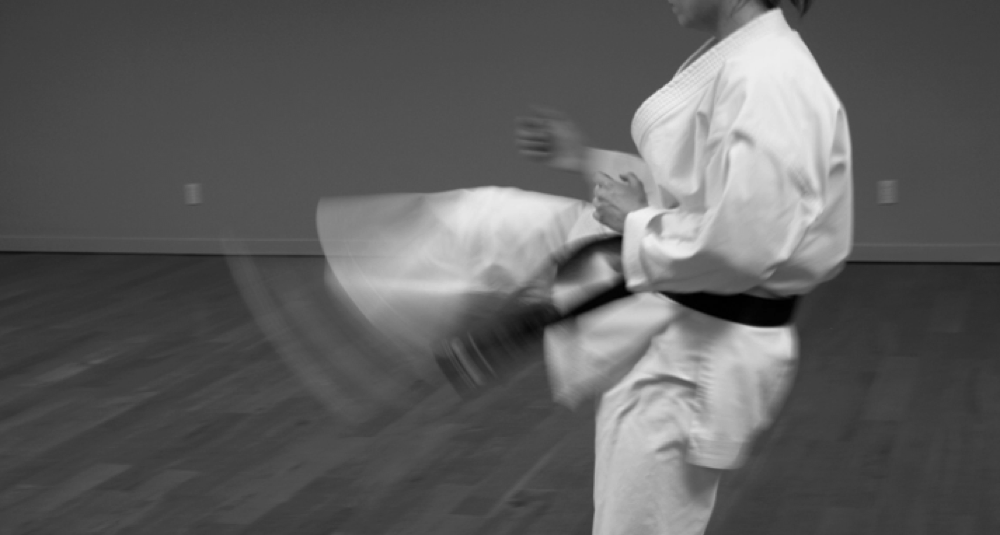
Class will usually begin with a warm-up which consists of gentle rotations to loosen the joints followed by some aerobic activityto raise the heart rate and warm the muscles. Next some gentle stretching
(never stretch too hard when warming-up as it may injure the muscles).
Next simulated motion, which is doing karate slowly and gently to get used to the motion.
Karate may be divided into three main areas of practice.
These are kihon, kata and kumite
Kihon (基本)
These are basic movements done without a partner. The goal of kihon practice is to teach the student the basic movements of karate. The movements are often broken down into their component parts to better facilitate learning. As the student advances, they may be grouped to make combinations.
New students should take their time at first, learning to make the movements properly. There will be lots of time to go faster later as your ability increases. Doing the movement properly helps prevent injury and gives the student a firm foundation on which to build. If learned improperly, it takes much longer to relearn. So take your time and get it right the first time.
Kata (型)
They are form exercises which have been passed from generation to generation. In fact one of their primary uses was as a way of passing along information. Remember, long ago, there were no cameras or video. Kata have several other uses. They are an excellent way to mold and shape the body. Great care should be taken to follow the form correctly. Each move of the kata has a practical application and can teach us self-defence. They also teach timing and rhythm.
Each kyu level learns one kata. White belts, for example, learn a kata named Heian Shodan (平安段).
There are five katas in this series and one is learned for the first five kyu levels
Kumite (組手)
It means sparring; that is work with a partner. The thought of sparring often makes new students nervous. There is no need to be. Sparring is done in a controlled manner and no contact is allowed. New students start with what is called step sparring. In step sparring, each move is pre-arranged and each student knows his part. As students progress, they move to more advanced forms of sparring. But at all levels, control and respect for your partner are stressed.
As class draws to an end we usually do a warm down and often some stretching.
The bowing to the sensei and shomen will be repeated. The idea of the meditation at the end is to clear the mind in preparation to return to the outside world.
Enter Text
The class